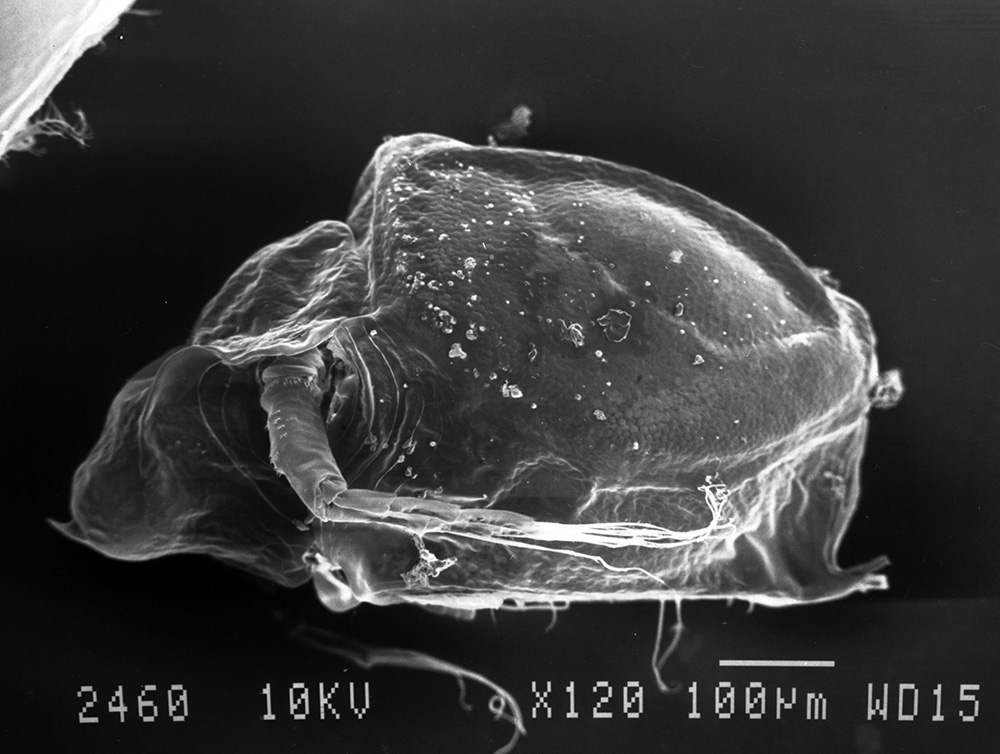
The study was conducted jointly with American colleagues from the State University of New York at Buffalo. Members of the Scapholeberinae subfamily of the Daphniidae family were studied using genetic and morphological methods. Based on the results of the work, a species new to scientific study was identified, named after the outstanding researcher of cladocerans N.N. Smirnov - Scapholeberis smirnovi.
Cladocerans ("water fleas") are one of the most common microscopic (most are 0.5-5 mm in size) animals of continental water bodies. They are traditional model objects for biologists of various specialties. It is on their example that the biogeography of freshwater fauna is currently being formed. If the biogeography of terrestrial and marine animals is relatively well studied, the biogeography of the inhabitants of continental water bodies is in its formative stage.
Most scientific research on cladocerans has previously been focused on Daphnia, a planktonic crustacean belonging to the large Daphniidae family. At the same time, there are their closest relatives who lead a completely different way of life, attaching themselves from below to the surface film of water, although they are able to swim in water like daphnia. The group of organisms that are associated with the surface film of water is called a "neuston". Scientists of IEE RAS, together with their American colleagues from the State University of New York at Buffalo, studied the members of the Scapholeberinae subfamily of the Daphniidae family, as well as extremely common inhabitants of continental reservoirs of different latitudes using genetic and morphological methods, and an article on the results of these works was published in the journal PeerJ.
The genetic part of the work was performed based on the study of the sequences of the mitochondrial COI gene. It is shown that earlier the diversity of representatives of the genus was greatly underestimated. In fact, there are at least 22 distinct genetic groups in the world, each of which appears to be a biological species. Moreover, the distribution of these species around the planet is quite diverse, but almost all phylogroups are distributed only on a single continent (this distribution is called "continental endemism"), and some are endemic to small regions. Interestingly, several “trans-Beringian phylogroups” - that is, common in the eastern part of Eurasia and western North America, were discovered as well. This is quite understandable, taking into account that not long ago, only about 10 thousand years before, two continents were connected by a vast bridge - Beringia.
“Thanks to our new data and their coordination with the previously obtained data on 16S + 12S by our team, it became possible to genetically identify the main clades and taxa from the sequences of the COI gene. In 2003, it was proposed to use its sequences as a "genetic barcode" to identify any animal. Serious efforts have been made in the field of obtaining "barcodes", but often they are carried out separately from traditional taxonomy, including the use of signs of their appearance and structure to distinguish between species. For scfoleberin, prior to our study, accurate genetic identification of species was impossible - this was confirmed by the analysis of data on the COI gene sequences in the international databases GenBank and BOLD. The accuracy of species identification before our study was no higher than 30%, meaning that more than two thirds of identifications were erroneous”.
“Now this situation has been radically rectified, and an accurate genetic determination of scfoleberin appears to be possible”, said project manager Aleksey Alekseevich Kotov, corresponding member of the Russian Academy of Sciences, professor of the Russian Academy of Sciences, leading researcher at the Moscow A. N. Severtsov Institute of Ecology and Evolution of the Russian Academy of Sciences.
In the Far East of the Russian Federation and in Korea, a species new to science has been discovered, Scapholeberis smirnovi (Garibian et al., 2020), the diagnostic signs of the external structure of which distinguish it from other species. The species is named after Nikolai Nikolaevich Smirnov, an outstanding researcher of cladocerans, and the founder of the Russian school of their study, to which all Russian members of this scientific group belong.
The work is being carried out within the framework of the Russian Science Foundation project 18-14-00325.
More information:
Indicator: "Живущих под поверхностью водяной пленки ракообразных «штрихкодировали»"
